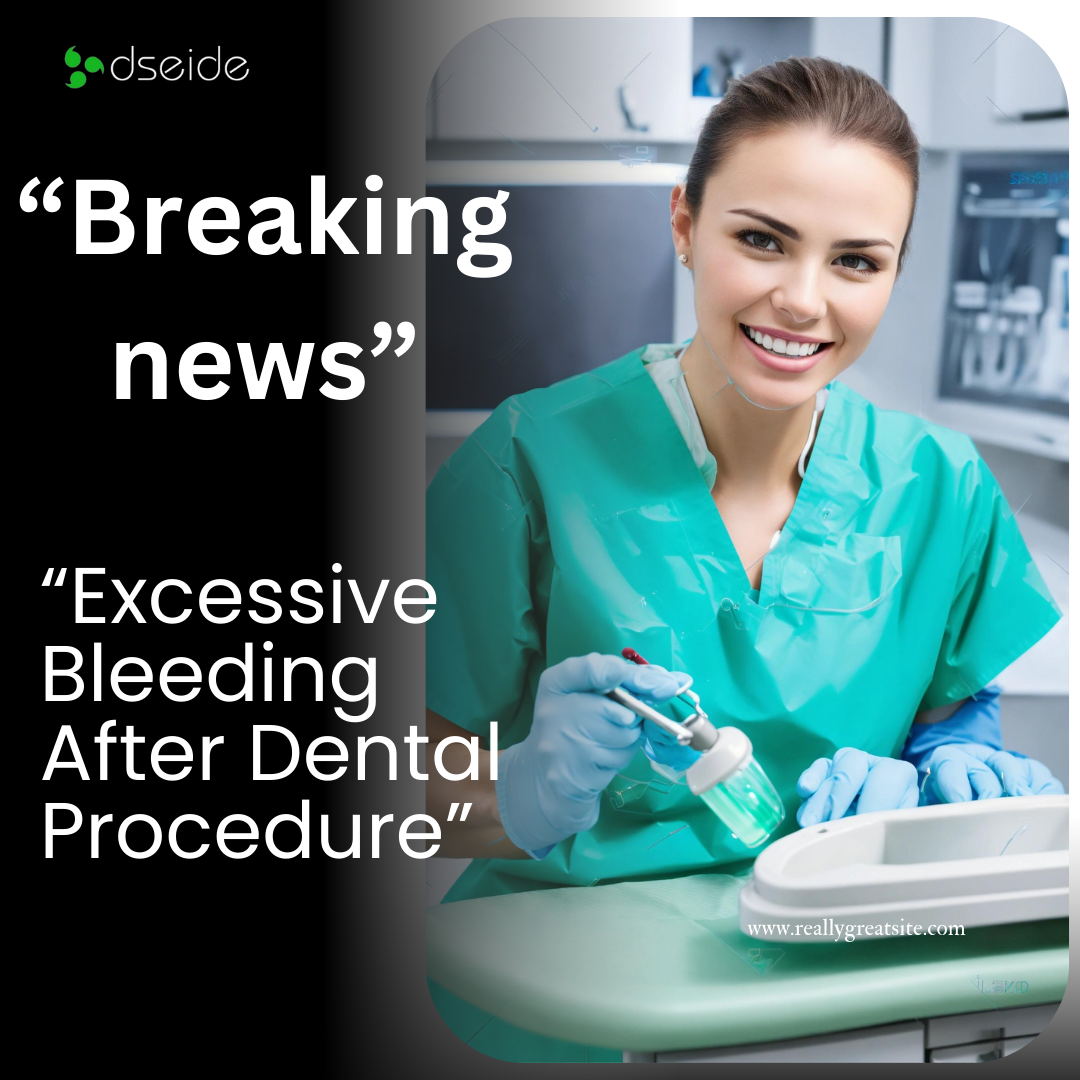Excessive Bleeding After Dental Procedure
A 57-year-old man presents to the emergency department due to excessive bleeding following a dental cleaning procedure. The patient's medical background includes the following:
No prior history of uncontrolled bleeding, easy bruising, or any bleeding disorders.
Recent fever 4-5 days ago but no other constitutional symptoms like weight loss or night sweats.
No symptoms of shortness of breath, chest pain, palpitations, dizziness, or gastrointestinal bleeding (such as vomiting, abdominal pain, hematuria, constipation, melena, hematochezia, or hemoptysis).
No signs of systemic disease, such as oral ulcers, joint pain or stiffness, rashes, alopecia, or dryness of eyes or mouth.
Medical and Surgical History:
No chronic illnesses or regular medication use.
Surgical history includes hernia repair 6 years ago.
No use of tobacco, illicit drugs, or alcohol.
Family History:
Unremarkable, with no known bleeding disorders.
Diagnostic Considerations:
Given the patient's presentation of excessive bleeding after a dental procedure, several potential causes need to be considered, including:
Coagulation Disorders: Although the patient does not report a history of bleeding disorders, acquired conditions (e.g., vitamin K deficiency, liver dysfunction, or medication-induced coagulopathy) must be considered.
Infection-Related Bleeding Tendencies: Given the recent history of fever, it is possible that an infection or sepsis is affecting the coagulation cascade.
Thrombocytopenia: Causes may include recent infection, immune thrombocytopenic purpura (ITP), or other hematologic disorders.
Vascular Abnormalities or Trauma: Minor trauma from the dental procedure may have led to excessive bleeding if there is an underlying vascular issue.
Medications or Supplements Not Disclosed: Though the patient denies medication use, potential undisclosed use of antiplatelets, anticoagulants, or supplements such as omega-3 fatty acids or herbal supplements that affect coagulation should be explored.
Systemic Diseases: Autoimmune diseases, such as lupus or other connective tissue diseases, can cause bleeding tendencies, though the patient does not present with symptoms like rashes, oral ulcers, or joint pain.
Recommended Diagnostic Workup:
To investigate the underlying cause of excessive bleeding, the following steps should be taken:
Complete Blood Count (CBC): To check for thrombocytopenia or signs of anemia.
Coagulation Studies: Including Prothrombin Time (PT), Partial Thromboplastin Time (PTT), and International Normalized Ratio (INR) to assess clotting function.
Liver Function Tests: To rule out hepatic causes of coagulopathy.
Renal Function Tests: To rule out uremia, which can also affect platelet function.
Infectious Workup: Blood cultures and inflammatory markers (e.g., CRP, ESR) if infection is suspected.
Review of Recent Medications or Supplements: To confirm there are no undisclosed medications or supplements that could contribute to bleeding risk.
sources: Medscape
A 57-year-old man presents to the emergency department due to excessive bleeding following a dental cleaning procedure. The patient's medical background includes the following:
No prior history of uncontrolled bleeding, easy bruising, or any bleeding disorders.
Recent fever 4-5 days ago but no other constitutional symptoms like weight loss or night sweats.
No symptoms of shortness of breath, chest pain, palpitations, dizziness, or gastrointestinal bleeding (such as vomiting, abdominal pain, hematuria, constipation, melena, hematochezia, or hemoptysis).
No signs of systemic disease, such as oral ulcers, joint pain or stiffness, rashes, alopecia, or dryness of eyes or mouth.
Medical and Surgical History:
No chronic illnesses or regular medication use.
Surgical history includes hernia repair 6 years ago.
No use of tobacco, illicit drugs, or alcohol.
Family History:
Unremarkable, with no known bleeding disorders.
Diagnostic Considerations:
Given the patient's presentation of excessive bleeding after a dental procedure, several potential causes need to be considered, including:
Coagulation Disorders: Although the patient does not report a history of bleeding disorders, acquired conditions (e.g., vitamin K deficiency, liver dysfunction, or medication-induced coagulopathy) must be considered.
Infection-Related Bleeding Tendencies: Given the recent history of fever, it is possible that an infection or sepsis is affecting the coagulation cascade.
Thrombocytopenia: Causes may include recent infection, immune thrombocytopenic purpura (ITP), or other hematologic disorders.
Vascular Abnormalities or Trauma: Minor trauma from the dental procedure may have led to excessive bleeding if there is an underlying vascular issue.
Medications or Supplements Not Disclosed: Though the patient denies medication use, potential undisclosed use of antiplatelets, anticoagulants, or supplements such as omega-3 fatty acids or herbal supplements that affect coagulation should be explored.
Systemic Diseases: Autoimmune diseases, such as lupus or other connective tissue diseases, can cause bleeding tendencies, though the patient does not present with symptoms like rashes, oral ulcers, or joint pain.
Recommended Diagnostic Workup:
To investigate the underlying cause of excessive bleeding, the following steps should be taken:
Complete Blood Count (CBC): To check for thrombocytopenia or signs of anemia.
Coagulation Studies: Including Prothrombin Time (PT), Partial Thromboplastin Time (PTT), and International Normalized Ratio (INR) to assess clotting function.
Liver Function Tests: To rule out hepatic causes of coagulopathy.
Renal Function Tests: To rule out uremia, which can also affect platelet function.
Infectious Workup: Blood cultures and inflammatory markers (e.g., CRP, ESR) if infection is suspected.
Review of Recent Medications or Supplements: To confirm there are no undisclosed medications or supplements that could contribute to bleeding risk.
sources: Medscape
Excessive Bleeding After Dental Procedure
A 57-year-old man presents to the emergency department due to excessive bleeding following a dental cleaning procedure. The patient's medical background includes the following:
No prior history of uncontrolled bleeding, easy bruising, or any bleeding disorders.
Recent fever 4-5 days ago but no other constitutional symptoms like weight loss or night sweats.
No symptoms of shortness of breath, chest pain, palpitations, dizziness, or gastrointestinal bleeding (such as vomiting, abdominal pain, hematuria, constipation, melena, hematochezia, or hemoptysis).
No signs of systemic disease, such as oral ulcers, joint pain or stiffness, rashes, alopecia, or dryness of eyes or mouth.
Medical and Surgical History:
No chronic illnesses or regular medication use.
Surgical history includes hernia repair 6 years ago.
No use of tobacco, illicit drugs, or alcohol.
Family History:
Unremarkable, with no known bleeding disorders.
Diagnostic Considerations:
Given the patient's presentation of excessive bleeding after a dental procedure, several potential causes need to be considered, including:
Coagulation Disorders: Although the patient does not report a history of bleeding disorders, acquired conditions (e.g., vitamin K deficiency, liver dysfunction, or medication-induced coagulopathy) must be considered.
Infection-Related Bleeding Tendencies: Given the recent history of fever, it is possible that an infection or sepsis is affecting the coagulation cascade.
Thrombocytopenia: Causes may include recent infection, immune thrombocytopenic purpura (ITP), or other hematologic disorders.
Vascular Abnormalities or Trauma: Minor trauma from the dental procedure may have led to excessive bleeding if there is an underlying vascular issue.
Medications or Supplements Not Disclosed: Though the patient denies medication use, potential undisclosed use of antiplatelets, anticoagulants, or supplements such as omega-3 fatty acids or herbal supplements that affect coagulation should be explored.
Systemic Diseases: Autoimmune diseases, such as lupus or other connective tissue diseases, can cause bleeding tendencies, though the patient does not present with symptoms like rashes, oral ulcers, or joint pain.
Recommended Diagnostic Workup:
To investigate the underlying cause of excessive bleeding, the following steps should be taken:
Complete Blood Count (CBC): To check for thrombocytopenia or signs of anemia.
Coagulation Studies: Including Prothrombin Time (PT), Partial Thromboplastin Time (PTT), and International Normalized Ratio (INR) to assess clotting function.
Liver Function Tests: To rule out hepatic causes of coagulopathy.
Renal Function Tests: To rule out uremia, which can also affect platelet function.
Infectious Workup: Blood cultures and inflammatory markers (e.g., CRP, ESR) if infection is suspected.
Review of Recent Medications or Supplements: To confirm there are no undisclosed medications or supplements that could contribute to bleeding risk.
sources: Medscape





